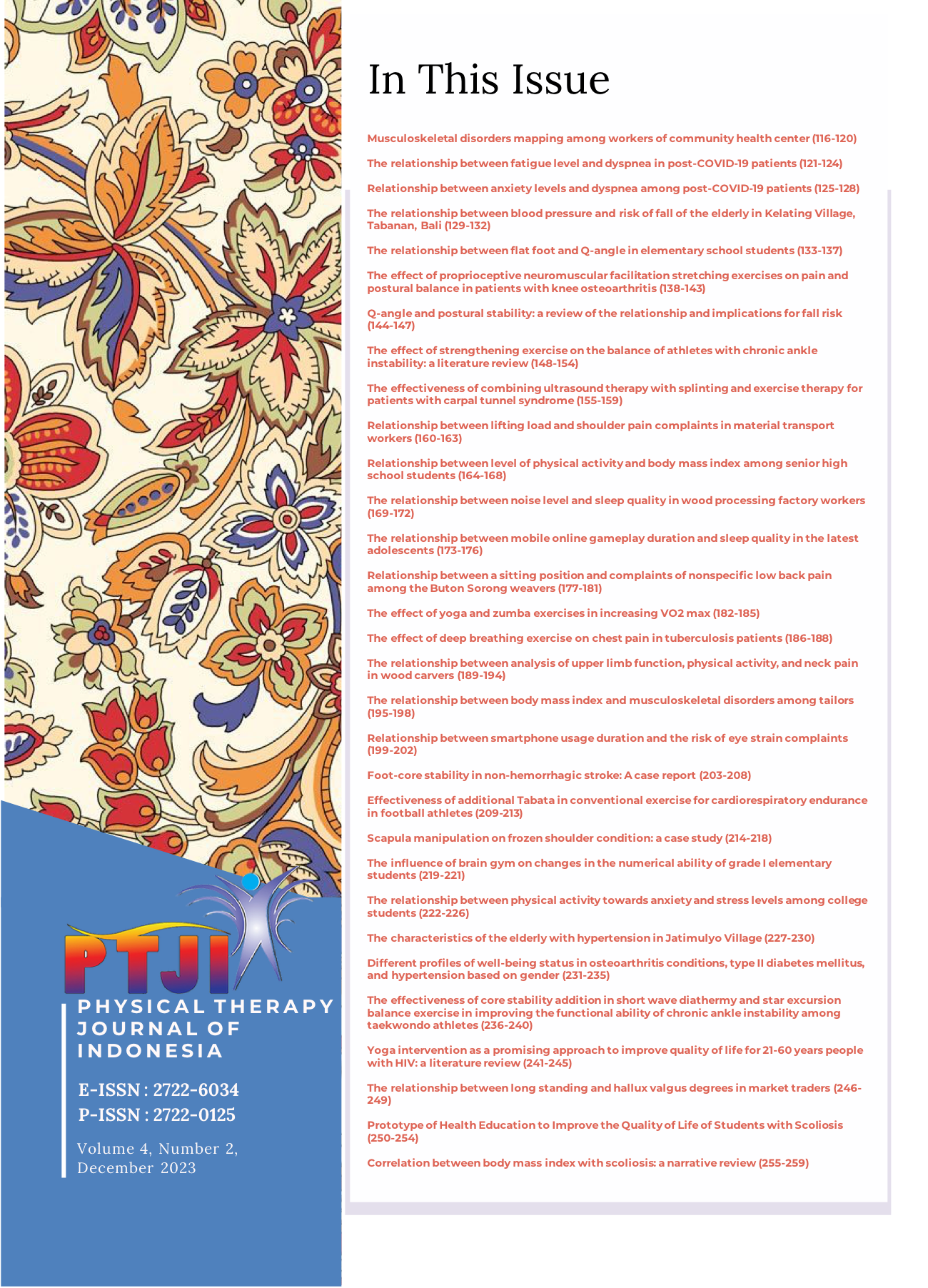Effectiveness of additional Tabata in conventional exercise for cardiorespiratory endurance in football athletes
Abstract
Background: Tabata exercise is the high-intensity interval training (HIIT) category that includes various motions. Exercise can increase cardiorespiratory endurance. The Cooper Test's VO2 max value can be used to assess a person's cardiorespiratory endurance.
Methods: A simple random sample methodology is employed in the study method, a randomized controlled trial. Two weeks were spent conducting this study. A total of 36 men with male sex who were split into two groups served as the study's samples. Eighteen people total, comprising the conventional exercise with Tabata and conventional exercise only. Pairwise simple t-tests and independent t-tests were employed for data analysis.
Results: Based on the paired simple t-test calculation findings, it was determined that hypothesis was approved in the intervention group because the P-value was 0.000 (p< 0.050). Still, it was rejected in the control group because the value was 0.083 (p> 0.050). The significance between the two groups was 0.000 (p< 0.050), according to the findings of computing the post-test data and the difference between the pre-test and the post-test using the independent t-test. The two groups differed significantly from one another.
Conclusion: There were differences in effectiveness between additional Tabata in conventional exercise and conventional exercise only in cardiorespiratory endurance changes.







3.gif)

